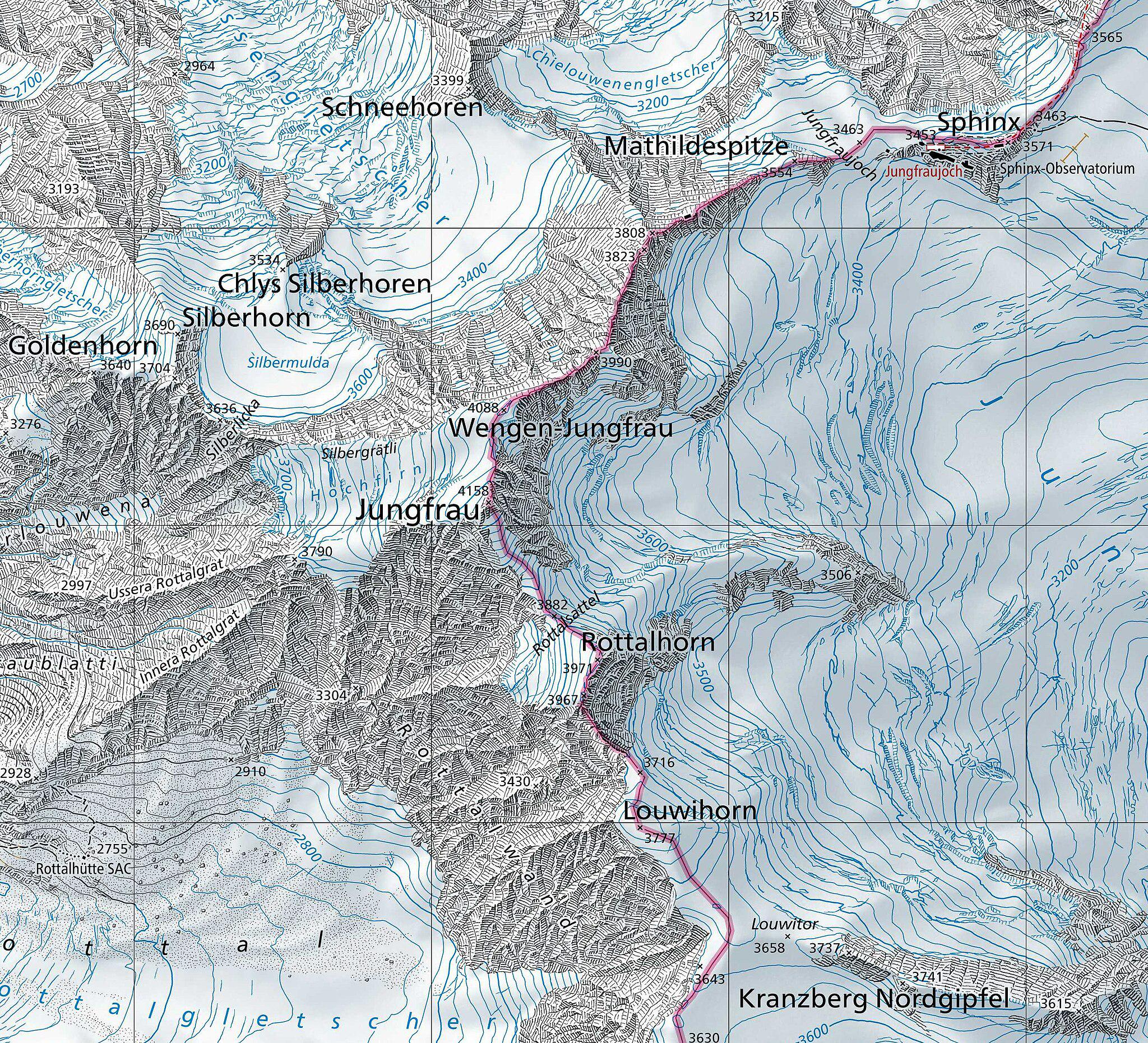Map of the Jungfrau Mountain and Switzerland's Highest Railway


Alex Cartwright
Senior Cartographer & GIS Specialist
Alex Cartwright is a renowned cartographer and geographic information systems specialist with over 15 years of experience in spatial analysis and data...
Geographic Analysis
What This Map Shows
This map showcases the Jungfrau mountain range in Switzerland, highlighting its significance as the location of the highest railway in the country. Nestled in the Bernese Alps, the Jungfrau region is famous for its breathtaking scenery, glacial landscapes, and a robust network of hiking trails and railways. The specific focus of this map is to detail the routes and altitude of the Jungfrau Railway, which ascends to an elevation of 3,454 meters (11,332 feet) at the Jungfraujoch station, often referred to as the 'Top of Europe.' This visualization provides a clear representation of the railway's path against the backdrop of the majestic mountains that characterize this stunning region.
Deep Dive into the Jungfrau Mountain Range
The Jungfrau mountain range is one of the most iconic in the Swiss Alps, with peaks that dominate the skyline and attract climbers, hikers, and tourists from around the globe. The range includes the famous peaks of Jungfrau, Eiger, and Mönch, collectively known as the 'Big Three.' These towering summits not only define the region's geography but also play a pivotal role in its ecology and economy.
Interestingly, the Jungfrau region is also a UNESCO World Heritage site, recognized for its exceptional natural beauty and geological significance. The area is characterized by its glacial landscapes, with the Aletsch Glacier, the largest glacier in the Alps, being a prominent feature. Covering approximately 81 square kilometers, the glacier is a vital component of the local ecosystem and is essential for understanding climate change's impact on glacial retreat.
The Jungfrau Railway, inaugurated in the early 20th century, is a remarkable engineering feat that allows visitors to reach the Jungfraujoch, the highest railway station in Europe. Covering a distance of 9.3 kilometers (5.8 miles), the railway travels through tunnels and over bridges, offering stunning views of the surrounding peaks and glaciers. The journey is not just about reaching the destination; it is an experience that showcases the breathtaking landscape of the Bernese Oberland.
Notably, the area around Jungfrau is also rich in biodiversity. The unique alpine climate supports various flora and fauna, including rare species of plants that thrive in this high-altitude environment. The region is home to wildlife such as chamois, marmots, and the elusive ibex, making it a prime location for wildlife observation and photography.
Regional Analysis
The Jungfrau region is part of the larger Bernese Oberland, which encompasses various valleys, lakes, and mountain ranges. The map allows us to see how the Jungfrau Railway connects with other key areas in the region, including Interlaken, Lauterbrunnen, and Grindelwald. Each of these towns offers different access points to the mountains and showcases the diversity of experiences available.
For example, Interlaken serves as the primary gateway for many tourists, providing numerous accommodation options and adventure sports. Lauterbrunnen, with its stunning waterfalls, attracts visitors looking for natural beauty and serene landscapes. Meanwhile, Grindelwald is known for its skiing and hiking opportunities, making it a year-round destination.
A significant point of comparison is the accessibility of these areas. While the Jungfrau Railway provides a unique access route to the high alpine environment, other transportation options such as cable cars and funiculars also function within the region, each offering distinct viewpoints and experiences. The regional transportation network is crucial for tourism, facilitating the movement of thousands of visitors who flock to the area annually.
Significance and Impact
The Jungfrau mountain range, particularly through its railway, plays a critical role in the Swiss economy and tourism sector. The region attracts millions of visitors each year, contributing significantly to local businesses, from hotels and restaurants to outdoor adventure companies. It is estimated that the Jungfrau region generates hundreds of millions of Swiss Francs in revenue annually.
Moreover, the environmental significance of the Jungfrau area cannot be overstated. As a major glacial region, it serves as a natural laboratory for scientists studying climate change and its impacts on glacial retreat. The ongoing monitoring of glaciers like the Aletsch provides invaluable data that can influence environmental policy and conservation efforts in Switzerland and beyond.
What's fascinating is how the interplay of tourism and conservation is managed in such a delicate ecosystem. As tourism continues to grow, the challenge lies in balancing economic benefits with environmental protection. Future projections indicate that as climate change impacts become more pronounced, the Jungfrau region may see shifts in its landscapes, biodiversity, and visitor patterns. This makes it essential for stakeholders to prioritize sustainable practices to preserve the beauty and integrity of this iconic mountain range for generations to come.
Visualization Details
- Published
- October 16, 2025
- Views
- 42
Comments
Loading comments...